Top 5 Guitar DAWs for Music Production in 2024
Category: Guitar Gear
Discover the Best Guitar DAWs to Elevate Your Music Production
For guitarists passionate about crafting their sound and producing stellar tracks, choosing the right Digital Audio Workstation (DAW) can be daunting. Whether you're a seasoned player looking to refine your guitar recordings with professional tools or an emerging musician eager to mix guitar-heavy tracks with crisp effects, this guide is tailored just for you. You’ve likely searched for the top guitar DAWs that offer seamless guitar integration, versatile amp simulations, and intuitive workflows to capture your unique tone without compromise.
This post goes beyond generic DAW comparisons — it focuses on the best DAWs optimized specifically for guitarists and guitar-based music production. We’ve analyzed industry trends, features, guitar-centric plugins, and user experience to bring you a clear, expert-backed breakdown of the top five DAWs in 2024. Whether you’re into recording, editing, looping, or producing complete tracks, you’ll find insights here that directly address your needs and pain points. Our goal? To help you make an informed decision swiftly, so you can spend more time creating great music and less time wresting with software. Dive in to discover which DAW fits your style, gear, and budget perfectly.
- Discover the Best Guitar DAWs to Elevate Your Music Production
- Understanding Guitar-Focused DAWs: What Makes a DAW Ideal for Guitarists?
- Criteria for Selection: How We Chose the Top 5 Guitar DAWs
- 1. Ableton Live: Versatility and Guitar Integration
- 2. Logic Pro X: Apple’s Pro Guitar Production Suite
- 3. Reaper: Affordable Powerhouse for Guitarists
- 4. Pro Tools: Industry Standard for Recording Guitar Tracks
- 5. Cubase: Comprehensive Guitar Composition and Production
- Bonus Tips: Essential Guitar Plugins and Effects to Enhance Your DAW Setup
- Comparing the Top 5 Guitar DAWs: Price, Platform, and User Experience
- Workflow Tips for Guitarists Using DAWs: Recording, Editing, and Producing Efficiently
Understanding Guitar-Focused DAWs: What Makes a DAW Ideal for Guitarists?
When it comes to selecting a Digital Audio Workstation (DAW) tailored for guitar players, not all software is created equal. The perfect guitar DAW goes beyond just recording capability—it must seamlessly integrate with guitar-specific tools that inspire creativity and deliver authentic tones. Key features that set guitar-focused DAWs apart include:
-
Amp Simulators and Cabinet Modeling
High-quality, built-in amp simulators allow guitarists to shape their tone without relying on physical gear. Look for DAWs offering versatile amp models and speaker cabinets that replicate classic and modern amps, enhancing your sound whether you prefer clean, crunch, or heavy distortion. -
Guitar Effects Integration
The ability to easily incorporate and tweak a wide range of guitar effects such as overdrive, delay, reverb, modulation, and wah pedals is essential. DAWs with dedicated guitar effect racks or native plugins streamline the creative process by reducing latency and preserving signal integrity. -
Low Latency Performance
Latency—the delay between playing your guitar and hearing the sound—is a critical factor for recording and live monitoring. An ideal guitar DAW must have optimized audio buffering and interface compatibility to minimize latency, ensuring a natural playing experience and tight timing during tracking. -
Flexible Track Editing for Guitar Parts
Guitar-focused DAWs provide intuitive editing workflows tailored to stringed instruments, including fretboard-style MIDI editors, detailed automation, and powerful comping tools to perfect guitar takes without losing the human feel.
By prioritizing these features, guitarists can craft their signature sound directly within the DAW environment, making these workstations indispensable for studio and home production alike. In the following sections, we’ll examine the top five guitar DAWs that excel in these areas, helping you find the best fit for your playing style and production needs.
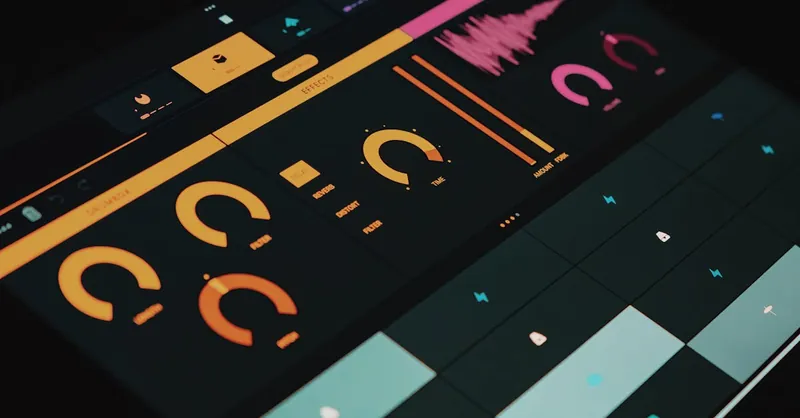
Image courtesy of Egor Komarov
Criteria for Selection: How We Chose the Top 5 Guitar DAWs
Selecting the best DAWs for guitar players involves much more than just a feature checklist. Our evaluation focused on aspects that directly impact guitar-driven music production—ensuring each DAW enhances your workflow and delivers exceptional sound quality tailored for guitarists. The key criteria we used include:
-
Ease of Use and Intuitive Workflow
A DAW must offer a user-friendly interface that guitarists can navigate effortlessly, whether you’re tracking riffs, layering effects, or arranging multi-guitar sessions. We prioritized DAWs with streamlined workflows that minimize distractions, allowing you to stay focused on playing and creativity rather than technical complexities. -
Compatibility with Guitar Plugins and Amp Simulators
Since guitar tone crafting is critical, we assessed how well each DAW integrates with both native and third-party guitar amp simulators, cabinet emulators, and effects plugins. DAWs that support seamless plugin hosting with low CPU load enable players to experiment with a variety of sounds without compromising performance. -
High-Quality Recording and Audio Performance
Capturing the nuances of your guitar tone relies on DAWs with clean, transparent recording engines and robust audio handling. We looked for platforms that support high sample rates, low latency input monitoring, and buffer management optimized for real-time guitar tracking to ensure every note and articulation comes through crystal clear. -
Guitar-Focused Editing Tools and MIDI Support
Effective guitar production sometimes requires detailed editing—from comping takes to tweaking vibrato or timing. We considered DAWs that provide guitar-friendly editing features such as audio-to-MIDI conversion, fretboard-style MIDI editors, and smart quantization suited for stringed instruments. -
Workflow Flexibility for Guitar-Centric Music Production
Finally, we emphasized DAWs that offer flexible routing options, customizable signal chains, and easy integration with hardware controllers or guitar processors. This flexibility empowers guitarists to build personalized setups, whether recording solo performances, producing complex multi-guitar arrangements, or performing live looping.
By using these criteria, we ensured the top five guitar DAWs not only excel technically but genuinely support the needs and creative instincts of guitar players. This approach helps you find a powerful yet approachable digital audio workstation that will inspire your guitar-based music production for years to come.
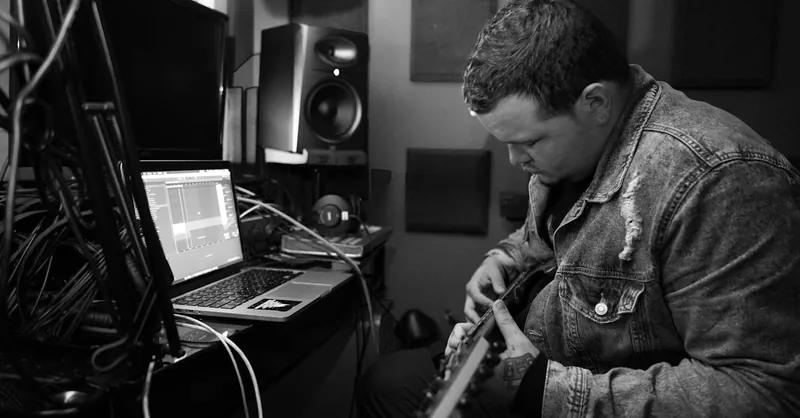
Image courtesy of Brett Sayles
1. Ableton Live: Versatility and Guitar Integration
Ableton Live stands out as a powerhouse DAW for guitarists who value flexibility, creative looping, and real-time performance capabilities. Its intuitive session view enables guitar players to experiment with guitar loops and riffs effortlessly, making it ideal for both songwriting and live improvisation. With Ableton’s rack-based effects system, you can easily build custom guitar effect chains using native plugins like Amp, Cabinet, and various modulation and delay effects—all designed to deliver authentic guitar tones without the need for third-party software.
One of Ableton Live’s greatest strengths lies in its seamless integration with hardware pedals and audio interfaces, providing ultra-low latency monitoring that preserves your guitar’s natural feel while tracking and layering parts. The DAW’s warping engine allows precise timing adjustments for recorded guitar takes, enabling tight rhythm edits without compromising tone. Additionally, Ableton’s compatibility with third-party amp sims like AmpliTube or Neural DSP ensures you have access to a vast palette of guitar sounds right inside your project. Whether you’re building textured ambient soundscapes or hard-hitting rock tracks, Ableton Live’s versatile environment supports every step of your guitar-based music production workflow.
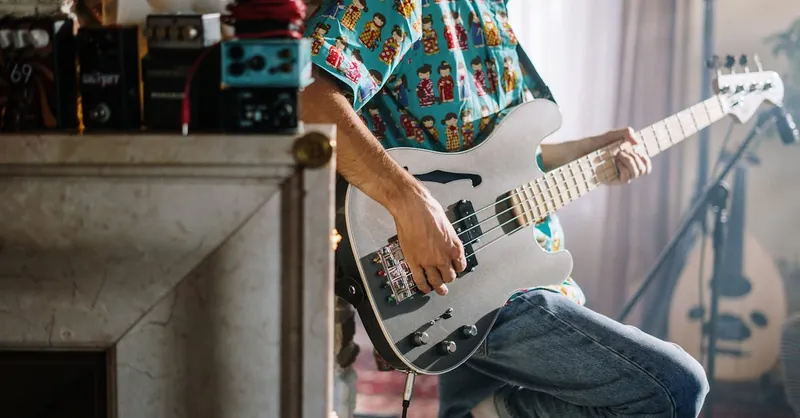
Image courtesy of cottonbro studio
2. Logic Pro X: Apple’s Pro Guitar Production Suite
Logic Pro X stands as a premier choice for guitarists who demand an all-in-one DAW with deep guitar-centric features and polished professional tools. One of Logic’s most praised guitar-focused components is the Amp Designer, a sophisticated amp simulator offering a wide array of classic and modern amplifier models. Combined with authentic cabinet impulses and the ability to customize microphone placements, Amp Designer gives guitarists the flexibility to dial in studio-quality tones without external gear.
Complementing the amp modeling is Logic’s powerful Pedalboard plugin, which recreates a full range of iconic stompbox effects such as overdrive, distortion, delay, modulation, and wah pedals. These pedals can be freely arranged within the signal chain, allowing seamless creation of complex, expressive guitar rigs entirely within the DAW environment. Logic Pro X also excels at low-latency monitoring, thanks to its efficient audio engine optimized for Apple hardware, ensuring guitarists experience near-zero delay when recording or performing.
Beyond tone shaping, Logic offers advanced mixing and editing capabilities tailored for guitarists. Its track comping tools simplify the process of combining multiple takes into the perfect performance, while flex time and pitch correction enable timing and tuning finesse without sacrificing natural feel. Logic’s integration with MIDI and the extensive library of virtual instruments also expands creative possibilities when blending guitar parts with other sounds. For guitar players invested in a Mac-centric setup, Logic Pro X delivers a formidable blend of professional amp simulation, customizable effects, and intuitive workflow, making it a top contender for serious guitar production in 2024.
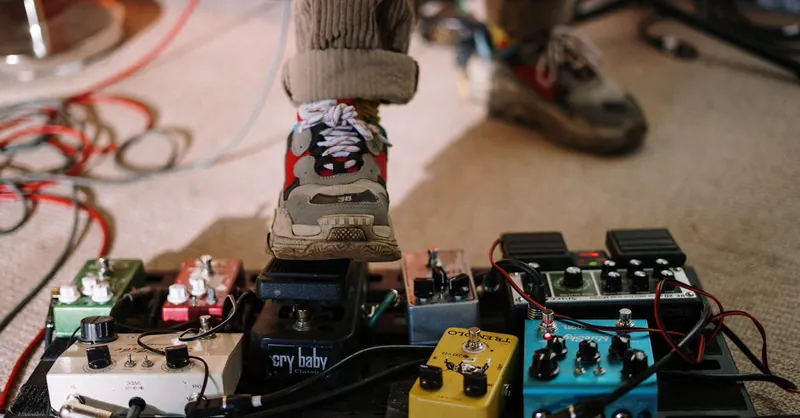
Image courtesy of cottonbro studio
3. Reaper: Affordable Powerhouse for Guitarists
Reaper is widely celebrated among guitarists and producers for its unmatched customization, lightweight design, and affordable pricing. Unlike many high-cost DAWs, Reaper offers a fully featured environment that can be extensively tailored to fit the unique needs of guitar players, making it a top choice for both beginners on a budget and seasoned musicians seeking flexibility.
Customization and Workflow Adaptability
Reaper’s open-ended architecture allows guitarists to create personalized workflows, from custom macros and keyboard shortcuts to bespoke routing configurations. This means you can streamline your recording sessions, set up quick access to your favorite guitar effects chains, and optimize project layouts to focus entirely on your guitar tracking and mixing. The modular nature of Reaper also supports multi-track comping, advanced take management, and flexible arrangement views, which are essential tools for perfecting complex guitar performances.
Low Latency and Audio Precision
When it comes to recording guitars, low latency is critical for maintaining a natural feel and tight timing. Reaper is engineered with optimized audio buffering and efficient CPU usage that ensures ultra-low latency monitoring, even when running multiple amp simulators and plugin effects simultaneously. This reliability helps guitarists capture pristine takes without distractions or delays.
Broad Compatibility with Third-Party Guitar Plugins
One of Reaper’s biggest strengths is its seamless compatibility with a vast range of third-party guitar plugins, amp simulators, and cabinet emulation software. Whether you prefer industry favorites like Neural DSP, AmpliTube, Guitar Rig, or Bias FX, Reaper handles these plugins fluidly, maintaining sound quality and performance stability. This openness empowers guitarists to experiment with countless tonal possibilities and effect combinations to forge their signature sound without being locked into a preset ecosystem.
Overall, Reaper stands out as an extremely versatile and cost-effective DAW for guitarists, combining powerful customization, efficient low-latency recording, and broad plugin support in one compact package. Its adaptability makes it a preferred platform for guitarists who want full control over their guitar production workflow without compromising sound quality or breaking the bank.
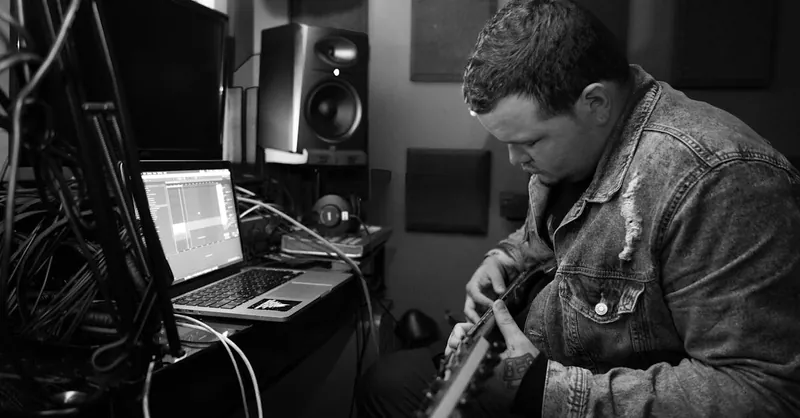
Image courtesy of Brett Sayles
4. Pro Tools: Industry Standard for Recording Guitar Tracks
Pro Tools has long been regarded as the industry standard for professional recording studios, making it a go-to DAW for guitarists who demand unparalleled precision and audio fidelity in their guitar tracking sessions. Its robust multi-track recording capabilities allow you to effortlessly handle complex guitar arrangements, whether you’re layering multiple rhythm parts, tracking intricate solos, or arranging multi-guitar harmonies. Pro Tools’ powerful editing tools provide razor-sharp precision, enabling detailed comping, timing corrections, and seamless crossfades that maintain the natural dynamics and feel of your guitar performances.
Multi-Track Guitar Recording and Editing Precision
With Pro Tools, you can record and manage dozens of guitar tracks without losing clarity or timing. Its superior DSP optimization and low-latency monitoring ensure tight synchronization between your playing and what you hear, essential for capturing expressive guitar takes. Pro Tools also excels at handling take folders and playlists, streamlining the comping process so you can effortlessly build the perfect guitar take from multiple recordings.
Superior Audio Quality and Integration
Pro Tools’ high-resolution audio engine supports up to 32-bit/192 kHz recordings, offering pristine sound capture that faithfully reproduces the subtle nuances of your guitar tone. Additionally, its seamless integration with professional-grade audio interfaces preserves signal integrity—whether you’re recording direct input (DI) guitars or mic’ing your amplifier. The included stock plugins include high-quality EQs, compressors, and reverbs, which can be expertly tailored for guitar tones, while Pro Tools’ compatibility with popular third-party guitar amp simulators and effects plugins means you can craft virtually any sound right inside the DAW.
Ultimately, Pro Tools is ideal for guitarists seeking a stable, professional-grade DAW with unmatched recording depth, editing precision, and audio fidelity. Its trusted reputation in the music industry solidifies its position as a top choice for serious guitar production workflows, especially when working on complex sessions that demand studio-level quality.
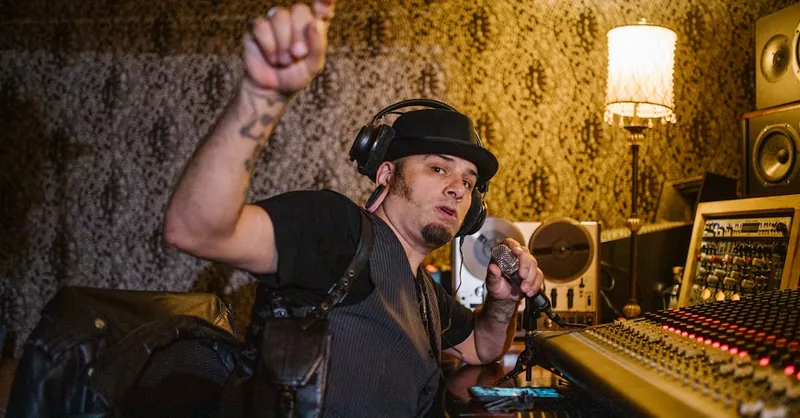
Image courtesy of RDNE Stock project
5. Cubase: Comprehensive Guitar Composition and Production
Cubase is a powerhouse DAW widely favored by guitarists for its robust guitar-friendly MIDI tools, versatile amp simulation capabilities, and highly customizable effect chains. Tailored for musicians who want to seamlessly blend guitar recording with advanced composition and production features, Cubase offers an all-encompassing environment that supports every stage of guitar-based music creation.
Guitar-Centric MIDI and Audio Features
One of Cubase’s standout advantages is its guitar-compatible MIDI tools, including fretboard-style editors that allow intuitive programming of guitar parts, chords, and solos. This makes it easier for guitarists who also use MIDI guitars or want to experiment with virtual guitar instruments and articulations. Cubase further enhances guitar production by offering advanced comping features and precise audio editing tools, letting you polish multiple takes into flawless performances without losing the natural feel.
Amp Simulation and Effect Chains
Cubase shines with its native VST Amp Rack, which provides an extensive collection of classic and contemporary amplifier models, speaker cabinets, and microphone setups to craft authentic guitar tones within the DAW. Paired with high-quality effect plugins—ranging from distortion and overdrive pedals to modulation, delay, and reverb—Cubase lets you build intricate customizable effect chains tailored specifically for your guitar sound. This modular setup ensures you can create everything from subtle warmth to aggressive metal tones without third-party software.
Optimized Workflow and Integration
With its flexible routing system, Cubase allows guitarists to easily manage signal chains and insert effects at multiple stages, which is perfect for parallel processing and re-amping workflows. Additionally, Cubase’s low-latency monitoring engine ensures your guitar tracking remains tight and responsive, crucial for capturing expressive performances in real time. Integration with hardware controllers and external guitar processors further expands its appeal as a comprehensive production hub.
In essence, Cubase offers guitarists a professional-grade DAW environment that balances intuitive guitar recording, flexible MIDI composition, top-tier amp simulations, and sophisticated effect management. Its broad feature set makes it a premier choice for musicians seeking to elevate their guitar production with uncompromised tone quality and creative control.

Image courtesy of Brett Sayles
Bonus Tips: Essential Guitar Plugins and Effects to Enhance Your DAW Setup
To unlock the full potential of your chosen DAW and elevate your guitar productions, incorporating the right guitar plugins, amp simulators, and effects pedals is crucial. These tools not only complement the native features of your DAW but also expand your tonal possibilities, helping you craft signature sounds with professional polish.
Top Guitar Amp Simulators to Consider
- Neural DSP Plugins – Renowned for ultra-realistic amp modeling and responsive dynamics, Neural DSP’s plugins like Archetype and Fortin perfectly capture a wide spectrum of guitar tones from pristine cleans to heavy distortion, making them essential for modern guitar production.
- IK Multimedia AmpliTube – Offering an extensive collection of classic amps, cabinets, and stompboxes, AmpliTube integrates seamlessly with most DAWs. Its customization options and preset management make it ideal for both studio recordings and live setups.
- Positive Grid BIAS FX – Known for its intuitive interface and deep tone-shaping controls, BIAS FX combines amp sims and pedal effects in one environment, delivering flexible rigs for everything from blues to metal.
Must-Have Guitar Effects Plugins and Pedals
- Overdrive and Distortion Pedals: Plugins like Sausage Fattener by Dada Life or Tube Screamer emulations add warmth and grit essential to rock and blues tones.
- Delay and Reverb Effects: Creative delay plugins such as EchoBoy by Soundtoys or lush reverbs like Valhalla VintageVerb enhance depth and atmosphere in your guitar tracks.
- Modulation Effects: Chorus, flanger, and phaser plugins bring movement and texture, with top picks including Eventide H3000 and MXR Flanger emulations.
Integrating Hardware Pedals with Your DAW
For guitarists who prefer the tactile feel of pedals, many DAWs support seamless integration of external pedals via audio interfaces. Setting up effects loops or routing signal chains through hardware pedals allows capturing unique analog textures alongside digital processing, combining the best of both worlds.
Optimizing Plugin Chains for Guitar Tone
When building your guitar rig inside a DAW, consider this typical chain order for optimal tone:
- Amp Simulator – the core tone source
- Overdrive/Distortion Pedals – shaping gain and saturation
- Modulation Effects – chorus, phaser for movement
- Delay and Reverb – space and ambience added last
This setup preserves clarity and dynamics, ensuring each effect contributes to a balanced and expressive guitar sound.
By carefully selecting and combining these essential plugins and effects with your preferred DAW, you’ll create a powerful, flexible guitar production environment that inspires creativity and delivers studio-quality tones every time.
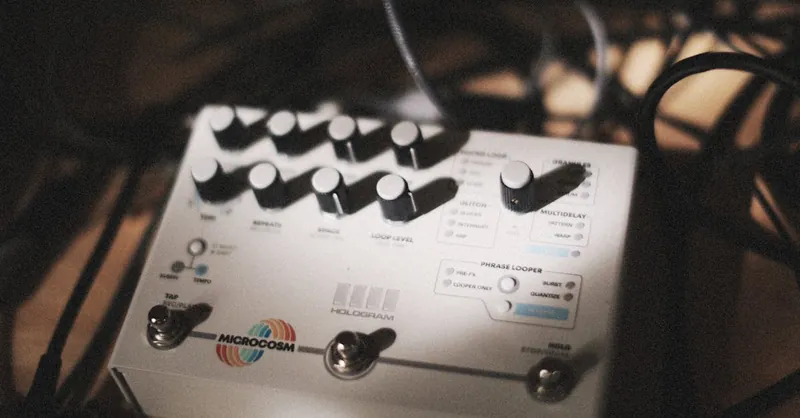
Image courtesy of Alexey Demidov
Comparing the Top 5 Guitar DAWs: Price, Platform, and User Experience
Choosing the right guitar DAW doesn’t just hinge on features—it also depends on affordability, operating system compatibility, and how quickly you can excel within the software’s workflow. Here's a side-by-side comparison of the top five guitar-centric DAWs to help you make an informed decision based on your budget, preferred platform, and experience level.
1. Price and Affordability
| DAW | Pricing Model | Approximate Cost |
|---|---|---|
| Ableton Live | Tiered licenses (Intro, Standard, Suite) | $99 - $749 (depending on version) |
| Logic Pro X | One-time purchase | $199 (Mac only) |
| Reaper | Affordable license | $60 for discounted / $225 commercial |
| Pro Tools | Subscription or perpetual | $299/year subscription / $599 perpetual |
| Cubase | Tiered versions (Elements, Artist, Pro) | $99 - $579 |
- Reaper emerges as the most budget-friendly option offering professional-grade features at a compelling price point.
- Logic Pro X provides exceptional value for Mac users with a flat rate and no subscription.
- Ableton Live suits guitarists seeking scalable options but can become costly at higher tiers.
- Pro Tools targets serious professionals willing to invest heavily for industry-standard tools.
- Cubase offers flexible pricing and versions catering to both hobbyists and advanced users.
2. Platform Compatibility
- Ableton Live, Reaper, Pro Tools, and Cubase are available on both Windows and macOS, providing versatility for users on multiple platforms.
- Logic Pro X is exclusive to macOS, which might be a limitation for users with Windows PCs but a natural choice for Apple enthusiasts.
- When selecting a DAW, ensure its compatibility with your computer’s operating system to avoid unnecessary hardware constraints.
3. User Experience and Learning Curve
- Ableton Live features an intuitive, modern interface ideal for creative looping and live performance, suited for guitarists eager to experiment with real-time ideas quickly.
- Logic Pro X offers a polished, well-organized workflow optimized for traditional studio recording and mixing, making it approachable for guitarists familiar with Apple’s ecosystem.
- Reaper, while highly customizable, can have a steeper learning curve due to its sheer flexibility and less guided UI, but this pays off for users who invest time in setting up personalized workflows.
- Pro Tools provides a precise, professional environment with complex editing features; mastering it typically requires experience, but it’s unrivaled in studio recording settings.
- Cubase strikes a balance with comprehensive features and guitar-centric tools, although its depth may initially seem overwhelming without prior DAW experience.
Summary of Considerations for Guitarists
- Opt for Reaper if you're budget-conscious and value customization with solid performance.
- Choose Logic Pro X if you're an Apple user wanting a seamless, all-in-one guitar production suite.
- Select Ableton Live for versatile live looping and innovative guitar integration.
- Go with Pro Tools if you seek industry-standard recording power and editing finesse.
- Lean toward Cubase when you require advanced MIDI guitar tools alongside powerful amp simulations.
This comparison helps guitarists assess not only the technical strengths of each DAW but also practical factors like cost efficiency, platform support, and the ease of getting started—all crucial for maximizing your guitar production journey in 2024.

Image courtesy of Brett Sayles
Workflow Tips for Guitarists Using DAWs: Recording, Editing, and Producing Efficiently
Maximizing your productivity when working with guitar DAWs hinges on adopting smart workflow strategies tailored specifically for guitar recording and production. Whether you’re tracking intricate riffs, layering ambient textures, or mixing multi-guitar arrangements, following best practices can dramatically improve your session flow and final sound quality. Here are key tips to help you record, edit, and produce guitar tracks efficiently within your DAW:
-
Set Up Low-Latency Monitoring Early
Before you start recording, optimize your audio interface settings for the lowest possible latency to capture natural, expressive guitar performances without delay. Most modern DAWs, including Ableton Live, Logic Pro X, and Reaper, offer direct monitoring or ultra-low buffer size settings—activating these reduces latency and keeps your timing tight. -
Create and Save Custom Guitar Effect Presets
Build your favorite amp and effect chains as presets within your DAW or through third-party plugins. This approach saves time by instantly recalling your signature tones and pedalboard setups, allowing you to focus on playing rather than tweaking settings during tracking sessions. -
Use Track Templates and Signal Routing for Multi-Amp Setups
For recording guitars through multiple amp sims or re-amping workflows, prepare track templates that include buses, effect sends, and parallel processing chains. This organization streamlines complex setups and enables quick switching between different tonal options without interrupting your creative flow. -
Leverage Comping and Take Management Tools
Make full use of your DAW’s comping features to combine the best parts of multiple takes into a flawless whole. Organizing takes into folders or playlists helps keep your session tidy and speeds up the editing process, letting you polish performances efficiently while preserving the nuance of your playing. -
Edit with Guitar-Centric Tools and Audio-to-MIDI Conversion
Utilize fretboard-style MIDI editors or audio-to-MIDI conversion plugins to tweak note timing, pitch, and expression without re-recording. These tools are especially useful for refining solos or complex passages where precision timing and pitch control enhance the overall mix. -
Establish a Logical Signal Chain Order in Your Effect Racks
Following an optimal plugin chain—starting with amp simulators, followed by distortion/overdrive, then modulation, and finally ambient effects like delay and reverb—ensures clarity, prevents frequency masking, and maintains dynamic responsiveness in your guitar tracks.
By integrating these workflow tips into your daily routine, you’ll reduce production friction, maintain sonic consistency, and unleash greater creativity in your guitar productions—no matter which DAW you choose. Efficient recording, intuitive editing, and organized signal processing are the pillars that empower guitarists to transform raw riffs into polished, professional tracks with confidence and speed.
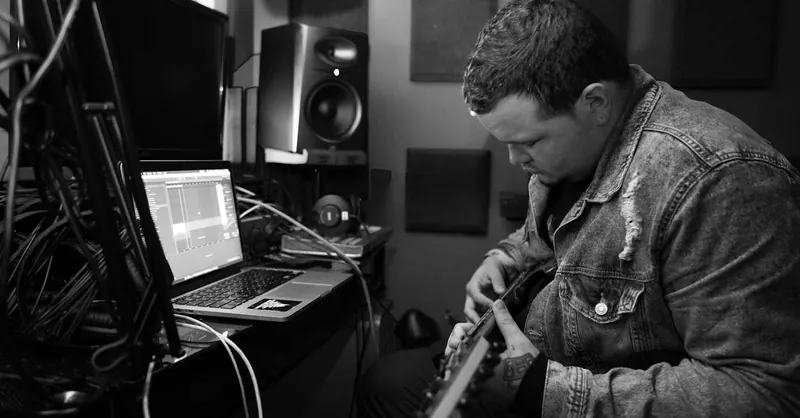
Image courtesy of Brett Sayles
